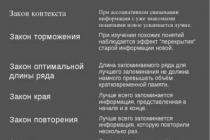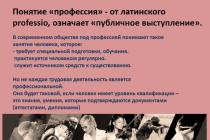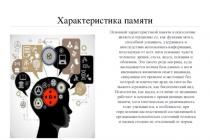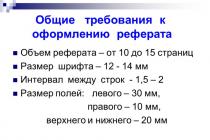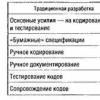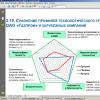Certain management approaches state apparatus arise together with the appearance of the first state formations. In ancient China, Egypt, Greece, Rome, there was an interesting and original experience of organizing the state, there was an understanding of its place and role in the regulation of social processes. However, firstly, almost all concepts were associated not so much with administrative as with political management, where the focus of research was on the activities of political institutions; secondly, this knowledge was not so much scientific as everyday in nature and was a simple generalization of existing experience. Nevertheless, often the level of understanding of state-administrative processes can serve as an example for our contemporaries.
In this regard, it should be noted that the quality, the level of controllability in society are permanent. The degree of complexity of society as an object is changing government controlled and in connection with this, the volume and nature of our knowledge grows and becomes more complicated. The quality factor of management as a whole remains the same. Thus, if at one level of development of society to build effective system state administration were sufficient worldly intelligence, experience and common sense, now, in order to solve the same problem, it is necessary to provide scientific and theoretical support for state-administrative activities.
Essentially first scientific (i.e. using scientific methods collection and analysis of information), a direction in administrative science arose in Austria and Germany in the 17th century, where the course of "cameral" or "cameralistic" sciences was taught at universities. Kameralien in German means "the science of government", and the word itself comes from the late Latin "camera", because. under the absolutist regime in Prussia since the 18th century. management was usually carried out in a collegiate form. This form of government balanced the centralization of power.
The most famous among cameral scientists is Lorenz von Stein (1815−1890). A native of Denmark, Stein taught at the University of Kiel. His main work "Die Verwaltungslohre" ("Theory of Public Administration" in 8 volumes) was published in Stuttgart in 1866-1884. Stein and his followers obviously did not limit themselves to the theory of state administration; on the basis of their proposals, important transformations were carried out in the organization of ministries that replaced collegiate institutions, in the recruitment and training of employees and in the organization of the administrative apparatus. The aim of the science of public administration, according to Stein, is "the realization of the principles social management in the highest sense of the word."
From the end of the 19th century cameral sciences in the countries where they originated entered a time of relative decline, because cameral sciences were partly absorbed by political science in the era of its revival. On the other hand, German and French authors believed that administrative law should take precedence over the science of public administration.
At the end of the 18th century and almost throughout the 19th century many interesting works dedicated to management issues. The loudest name of this era is Alexandre Francois Vivienne. His "Essays on Administration" (first edition - 1845, second - 1850) represent the first serious work in the field of the science of public administration, built according to a single plan and on its own conceptual basis. The practical results of Vivien's work were extremely fruitful, despite the political instability of the time. Specialized ministries were created, a law on civil servants and a procedure for their recruitment were developed, the apparatus was deconcentrated, and opened in 1848. School of Administration.
With the advent of the works of W. Wilson, F. Goodnow, M. Weber, we can talk about the beginning new stage in the development of the theory of administrative and public administration as an independent scientific direction. In their works, two fundamental ideas of the scientific theory of administrative and state administration were expressed and developed: 1) in order to reform the administrative apparatus, it must be well known, and, therefore, studied from scientific positions; 2) the apparatus of administrative-public administration should be separated from the sphere of politics. Chronological framework this stage can be conditionally determined from the 80s of the last century to 1920.
Since 1890 the study of public administration becomes part of curricula at leading US universities and Western Europe. Research Centers administrative-state activities and institutions began to appear in the US and Europe in the 20-30s.
Next stage in the development of the theory of administrative-public administration lasted from 1920 to 1950. The Americans made especially great strides in these years, which can be explained by a number of reasons. Unlike European countries, in the United States, higher education institutions already at that time enjoyed great freedom in curriculum design and teacher selection. They had the opportunity to experiment, widely introduce new courses, one of which was the course on the theory of administrative and public administration, which contributed to the development and dissemination of new science.
There was another favorable factor that influenced the intensive development of the theory of administrative-public administration in the United States. Already in those years, the Americans believed that the science of public administration and the science of managing private enterprises could and should be brought closer together. Courses in administrative organization, personnel management, budget technology, human relations, organization theory were read in many educational institutions The United States, both for those who were preparing themselves for public service, and for those who were to fill in the future the staff of business administration of private business. Since the teaching of these disciplines had such a wide audience, there was big number professors, textbooks, research work. All this contributed to the development of the theory of administrative-public administration. From this it becomes clear why so many valuable works were written in the United States over the course of several decades.
There was another factor of the same plan. Americans have always emphasized the practical importance of public administration studies; their scientific developments contained practical advice proposed sound reform projects. Such a utilitarian approach to the study of administrative and public administration made it possible to find public and private sources of funding for scientific work.
In the 1920s and 1950s, the most famous trends in the theory of administrative and public administration were the "classical school" and the "school of human relations". The prominent representatives of the "classics" are A. Fayol, L. White, L. Urvik, D. Mooney, T. Woolsey. The aim of the classical school was to develop the principles of administrative and public administration. At the same time, almost all the "classics" proceeded from the idea that following these principles would lead to the success of public administration in different countries Oh.
The principles of management developed by the classical school affect two main aspects. One of them is the substantiation of a rational system for managing administrative and state organizations, the second concerns building the structure of an organization. The system of administrative and state administration appears here as a hierarchical organization of a linear-functional type regulated from top to bottom with a clear definition of the function of each job category. It should be emphasized that such a model is quite effective in a stable social environment and the same type of managerial tasks and situations. It still finds its application at various levels of government.
Generally strengths The classical approach lies in the scientific understanding of all managerial relations in the system of administrative and public administration, in increasing labor productivity through operational management. However, in cases where the human factor has a decisive influence on the effectiveness of management, the use of this approach is clearly not enough.
Another influential trend in the theory of administrative and public administration was the so-called. School of Human Relations. It arose in the 1930s, when psychology was still in its infancy. The human relations movement emerged largely in response to the failure of the classical school to recognize the human factor as a key element in organizational effectiveness. The most famous scientists of this direction were M. Follet, A. Maslow, E. Mayo, W. Murphy. In their research, they drew attention to the analysis of psychological factors that cause employee satisfaction with their work, since in a number of experiments they managed to increase labor productivity by improving the psychological climate and increasing motivation.
Further research showed that a good relationship between employees do not automatically lead to an increase in the productivity of administrative organizations and that the motivation that orients employees to achieve high results is more important than simple job satisfaction. Within the framework of the human relations movement, various motivational models have been developed that are used in the theory of public administration.
Of particular importance are studies describing actual behavior individuals and groups in the process of development and adoption of administrative-state decisions. The methods developed by the school of human relations are effective only in a rather narrow area of public administration - personnel management, when personal and concrete impact on employees is especially important for timely decision-making and successful implementation of plans. However, in the field of operational and strategic administrative and public administration, the role of these methods is insignificant.
Modern stage in the development of the theory of public administration began in the 50s and continues to this day. The most influential directions of the modern period can be considered behavioral, systemic and situational.
The development of sciences such as psychology and sociology, and the improvement of research methods after the Second World War, made the study of behavior in the workplace to a large extent strictly scientific. Among the most prominent figures in the 50-60s, G. Simon, D. Smitzberg, V. Thompson and D. Easton should be mentioned. It was they who began to develop a new approach to public administration - behavioral, or behavioral. The originality of their work lies in the fact that the authors sought to present the achievements of modern science as the foundation of management science. social psychology and sociology and explain the actual functioning of administrative services through the analysis of the behavior of individuals and groups working in them.
The school of behavioral sciences has moved away somewhat from the school of human relations, which focused on methods of establishing interpersonal relationships. The new approach is characterized by the desire to assist civil servants to a greater extent in realizing their own capabilities in the administrative and state structures ah based on the application of the concepts of the behavioral sciences. The main goal of this school in the most general terms was to increase the efficiency of the organization by increasing the efficiency of its human resources.
As part of the behavioral approach, scientists have explored various aspects social interaction, motivation, nature of power and authority in administrative and public administration. The behavioral approach was especially popular in the 60s. Like earlier schools, this approach advocated a "single best way" to solve managerial problems. Its main postulate is that correct application behavioral science will help improve the efficiency of the work of both an individual employee and the system of administrative and public administration as a whole.
However, techniques such as changing the content of the work of civil servants and the participation of ordinary employees in the process of developing and making responsible decisions and programs have proven effective only for certain categories of employees and in certain situations. Along with the studies of the human relations school, the methods developed within the framework of the behavioral approach eventually began to be used mainly in the field of personnel management of administrative and public institutions.
From the beginning of the 60s, a systematic approach quickly began to gain popularity in public administration, which was largely facilitated by the work of G. Almond, T. Parsons. The application of systems theory to public administration has greatly facilitated the task for managers to see the entire organization in the unity of its constituent parts, which are inextricably linked with the outside world. This approach also helped to integrate the contributions of earlier schools, different time dominated in the theory and practice of public administration.
The main idea of the system approach is to recognize the interconnections and interdependence of elements, subsystems and the entire system of public administration with the external environment, i.e. with society as a whole, which allows us to consider the relationship in the system of administrative and public administration and between the system and society as a whole. This approach means that the strategy of public administration cannot be the object of accurate forecasting and planning, since society is constantly evolving and changing. However, this approach focuses on developing strategic management, establishing common goals and ways of behavior of public administration in general.
Today, a systematic approach is one of the most influential areas, both in the theory of public administration and in scientific management in general. Many well-known scientists believe that the role of this trend in modern science will increase.
Analysis of the main variables influencing the functions of public administration, on efficiency administrative structures is the main achievement of the situational approach, which has become a logical continuation of systems theory. It arose in the early 70s and made an important contribution to the development of public administration, using the possibilities of direct application of science to specific situations and conditions. The most famous theories developed in line with the situational approach are the concept of "soft thinking" and "organizational cybernetics".
Supporters of the situational approach to public administration argue that optimal structures do not exist. The central idea of the situational approach is the analysis of the situation, i.e. a specific set of circumstances that strongly affect a given administrative organization at a given specific time. Since the focus is constantly on a new situation, within the framework of this approach, “situational thinking” is of particular importance. Using this approach, managers can better understand which techniques will be most helpful in achieving the goals of the organization in a particular situation.
A huge role in the popularization and dissemination of this science is played by United Nations . Since 1967 Under the auspices of the UN, international meetings of experts on problems of administrative and state activity are regularly held. In addition, the United Nations Development Program (UNDP) is now doing a lot of research work with a practical bias, as well as comparative studies of the methods and achievements of various countries in the field of public administration. A worldwide system for collecting, disseminating and exchanging experience is being created, print media, and information technology. Handbooks and manuals are being prepared to address topical issues of public administration. Experts regularly assess and review administrative opportunities for development, develop models of modern reforms in the field of public administration, and offer training and retraining programs for staff.
Today we can say that the theory of public administration has international recognition and the official status of an independent scientific discipline.
Unfortunately, in Russia, the science of administrative and public administration received official recognition recently. During the period of the dominance of the Marxist-Leninist ideology, state administration was considered from the point of view of the "leading and guiding role of the party." Such important elements as goal-setting, decision-making, development and evaluation of programs and plans for social development were excluded from the competence of the state administration. The tasks of state administration essentially boiled down to ensuring the implementation of party decisions taken outside state structures. State administration covered only executive and managerial activities, its meaning was reduced to a clear formula "command - execution". Critical remarks, alternative searches and other creative moments in the activities of the state administration were not allowed.
That is why during the years of the domination of the party nomenclature, the science of administrative and public administration was simply not needed. It was regarded as "bourgeois", obviously false. The principles and methods of public administration in Western countries were interpreted mainly in a negative-critical aspect, which was explained by the general ideological attitudes of the past years.
Only since 1994. in Russia there is an educational specialty "State and municipal government”, in universities and secondary specialized institutions, the training of specialists in this field begins. However, the scientific management specialty "State and municipal management" in Russia still does not officially exist.
Today it is extremely important to explore and summarize the experience of the development of world science in the field of public administration. There is an international conceptual apparatus, materials of UN experts on the organization of administrative and state activities, which can and should be used. And at the same time there is a big independent work, since the science of administrative and public administration must be presented in the national lexicon, its applied technologies should be made understandable and accessible, and its capabilities should be fully used to improve the efficiency of public administration practice in our country.
Allocate various directions (schools) in the science of public administration .
1. Structural-institutional direction. The subject of numerous studies in this area is the organization of public administration at different levels: national, regional and local. This includes the development of a general theory of state organizations, the functions of the public administration apparatus, at different levels, the coordination of public administration as an integral system: the organization of government services, central authorities public administration and peripheral services, coordination at the inter-ministerial level, decision-making techniques, preparation of normative acts, filing of documents, administrative hierarchy, structure of government, as well as the relationship between administration and politics, administration and the “environment”, administration and public opinion.
2.Sociological and socio-psychological (personnel) direction. Studies of the administrative environment are primarily sociological in nature, but are not limited to this. In practice, we are talking about studying a certain set of models of collective or individual behavior of managerial personnel. The study of the relationship between the administration and pressure groups should also be included in this category. A large block of problems is the training and recruitment of managerial personnel. Questions are explored here optimal structure staffing of officials of the state apparatus, personnel management of state organizations, requirements for the mentality and style of work of professional civil servants, the problem of leadership, the problem of combating bureaucracy, resistance to change. However, the sociology of management, regarded as the sociological study of the apparatus of government, does not fully coincide with the science of public administration.
3.Organizational and technological direction. Here, problems related to the technique of public administration and focusing on "administrative management" are studied. They include specific methods, techniques, technologies administrative activities leading to an increase in the efficiency of the apparatus, the development of a theory of public decision-making, methods of administrative and public administration in crisis and conflict situations, technologies for the relationship between public administration and the media.
Further, each of the areas of administrative and public administration acts as a subject of scientific study and research: administrative and public administration in the conditions market economy, public administration social processes, ecology, finance etc.
The theory of public administration uses a set special or private theories(for example, the theory of conflict and consensus, decision-making, political forecasting, etc.). But at the same time, there is also general theory administrative and public administration, designed to explain public administration as a system and integrity.
Sometimes the term "school of public administration theory" is used. There are several criteria for selecting such schools:
1. Methodological positions of researchers. There may be such schools as: the Marxist school of public administration, the liberal school, the sovereign school of public administration and their varieties.
2.Schools as historical stages in the development of the science of public administration.
3. Cultural and national criteria: American school, European, Japanese, Russian schools of public administration, etc.
1) What are schools of public administration theory?
2) Expand the main directions and schools in the theory of public administration.
3) What are "camera" or "camera" sciences?
4) Give a comparative description of the main schools of public administration theory.
5) How did the theory of public administration develop in Russia?
6) What are the features of the development of the science of public administration in Russia?
7) What are the criteria for distinguishing public administration schools?
8) What are the main stages in the development of the theory of public administration.
9) Who are the representatives of the school of human relations and what is the essence of this direction?
10) Who are the representatives of the classical school of public administration?
11) What was the main idea of a systematic approach in the theory of public administration?
12) What is the international coordination in the study of the theory of public administration?
Self Tests
1. The process approach allowed:
1) exclude scientific research the best options solutions, as a kind of cure for all diseases;
2) automate part of the management processes;
3) recognize the factors external environment and develop methods for their analysis;
4) widely use mathematical methods in management.
2. When systems approach organization development is interpreted as a process:
1) changes in the structure of the control system;
2) continuous improvement of the technological subsystem;
3) expanding the scope of activities;
4) transition to a new life cycle.
3. Within the framework of the school of human relations, the following were developed:
1) principles for determining the norm of controllability;
2) basic theories of motivation;
3) basic techniques for formalizing management tasks;
4) the principles of labor rationing.
4. Within the framework of the classical school of management, the following were developed:
1) the scope of responsibility of the master and worker;
2) basic theories of motivation;
3) principles for determining the norm of controllability;
4) the main methods of formalization of managerial tasks.
5. Main research method used new school:
1) Timing;
2) Building a graphical model;
3) Building a mathematical model;
4) The division of the whole into parts and their detailed analysis.
At present, several historical schools and directions are distinguished in the theory of public administration. Leading among them are American, English, French and German. American School (Behavioral) has a general empirical (i.e. experimental) orientation of its research, many of its prominent representatives were not only theorists, but also practitioners. In the 1920s and 1930s, representatives of the “school of human relations” movement tried to explain the functioning of administrative services through an analysis of the behavior of individuals and groups working in them. The most famous scientists of this direction in the USA in the 20-50s were Mary Parker Follet, E Mayo, A. Maslow.
Wanglsh school economists considered public administration as a sphere of rational activity of people. English political scientist B. Barry developed the concept of “economic type” state power carried out through threats and promises. B. Barry considers power relations in society in terms of gains and losses. He believes that power relations take place only when one side benefits more from maintaining them than the other, having the ability to achieve obedience at the last cost of minimal losses.
At the French School (Classical) state Henri Fayol is considered a classic of management; his “theory of administration” is set out in the book “General and industrial management". A. Fayol gave a classic definition of scientific management: “To manage means to foresee, organize, dispose, coordinate and control; to foresee, that is, to take into account the future and develop a program of action; organize, that is, build a double - material and social - organism of the institution; dispose, that is, force the staff to work properly; to coordinate, that is, to connect, unite, harmonize all actions and all efforts; to control, that is, to take care that everything is done according to the established rules and given orders. ” A. Fayol formulated 14 general principles of management. This is the division of labor, power, discipline, unity of routine, unity of leadership, subordination of private interests to common ones, remuneration of personnel ... ..
german school public administration is the most influential among European schools. V. Weber believed that those who govern are entrusted with the task of creating an administrative elite, which must be legitimized (recognized) by the people, public opinion. Erhard's concept is about raising social role public administration. It proclaimed the subordination of all groups of the population to the common good, the strengthening of the role of the government, the reconciliation of all classes with the existing social order.
Liability of civil servants (constitutional, administrative, disciplinary, civil - legal, criminal)
A civil servant may be subject to all types of liability provided for by the current legislation.
Criminal liability civil servant comes under the condition that he commits a crime under the Criminal Code of the Russian Federation.
Civil Liability occurs if property or non-property damage (harm to health or moral harm) is caused to a citizen or organization by his actions or inaction.
Executive subject to administrative responsibility in case they commit administrative offense in connection with non-performance or improper performance of their official duties.
For the commission of a disciplinary offense, i.e. for failure to perform or improper performance by a civil servant through his fault assigned to him official duties, the representative of the employer has the right to apply the following disciplinary action: remark; rebuke; warning about incomplete official compliance; dismissal civil service; dismissal from the civil service on the grounds.
For each disciplinary offense, only one disciplinary sanction may be applied.
Before applying a disciplinary sanction, the representative of the employer must request an explanation from the civil servant in writing. If a civil servant refuses to give such an explanation, an appropriate act is drawn up. The refusal of a civil servant to give an explanation in writing is not an obstacle to the application of a disciplinary sanction.
Before applying a disciplinary sanction, an internal audit is carried out.
When applying a disciplinary sanction, the severity of the disciplinary offense committed by a civil servant, the degree of his guilt, the circumstances under which the disciplinary offense was committed, and the previous results of the civil servant's performance of his official duties are taken into account.
Disciplinary action is applied immediately after the discovery of a disciplinary offense, but no later than one month from the date of its discovery, not counting the period of temporary incapacity for work of a civil servant, his stay on vacation, other cases of his absence from service due to good reasons, as well as the timing internal check. A disciplinary sanction may not be applied later than six months from the day the disciplinary offense was committed.
At present, several historical schools and directions are distinguished in the theory of public administration. Leading among them are American, English, French and German.
The American school has a general empirical (i.e., experimental) orientation of its research; many of its prominent representatives were not only theorists, but also practitioners. In the 20-30s. representatives of the “school of human relations” movement tried to explain the functioning of administrative services through an analysis of the behavior of individuals and groups working in them. The most famous scientists of this direction in the USA in the 20-50s. were Mary, Parker, Follet,
E. Mayo, A. Maslow.
In the 50s. A. Maslow developed a hierarchy of needs, according to which the motives of people's actions are mainly not economic needs (as the classics believed), but social, selfish ones, which allow realizing creative possibilities that can only be partially and indirectly satisfied. Based on these findings, A. Maslow recommended using human relations management techniques, including creating a favorable psychological climate in the team, consulting with employees and providing them with more opportunities to realize their goals. creativity at work.
In the 50s. in the United States, a behavioral approach is emerging, based on the desire to reveal the capabilities of a person in the management process. As part of the approach, McGregor's X and Y theory was developed. Theory X says: average person does not like to work and avoids work whenever possible. Theory Y states that it is as natural for a person to expend moral and physical strength on work as it is to rest or play. This means that a person can be stimulated to work if he is given the opportunity to fully open up, take responsibility, and feel his importance for the organization. McGregor worked on Theory Z, in which he tried to combine the needs and aspirations of the corporation and the individual.
In the English school, economists considered public administration as a sphere of rational activity of people. The English political scientist B. Barry developed the concept of the "economic type" of state power, exercised through threats and promises. B. Barry considers power relations in society in terms of gains and losses. He believes that power relations take place only when one side benefits more from maintaining them than the other, having the ability to achieve obedience at the last cost of minimal losses. English philosopher M. Oakeshott in the 50-60s. developed two concepts of public administration: target and civil. In his opinion, these types in their pure form are not found anywhere, since they are ideal theoretical constructions. M. Oakeshott proposes the idea of targeted public administration, where the value of a person is determined by his contribution to the common cause, which means the subordination of individuality to corporatism. IN Lately new approaches and directions appeared in the English school. According to
P. Cheklanda, the only way study integrity - look at it from as many points of view as possible.
In the French school of public administration, Henri Fayol is considered a classic; his "theory of administration" is set out in the book General and Industrial Administration. A. Fayol gave a classic definition of scientific management: “To manage means to foresee, organize, dispose, coordinate and control; to foresee, i.e. take into account the future and develop a program of action; organize, i.e. to build a double (material and social) organism of the institution; dispose, i.e. make staff work properly; coordinate, i.e. link, unite, harmonize all actions and all efforts; control, i.e. see to it that everything is done according to the established rules and given orders. A. Fayol formulated 14 general principles of management. These are the division of labor, power, discipline, unity of order, unity of leadership, subordination of private interests to common ones, remuneration of personnel, centralization, hierarchy, order, justice, constancy of personnel, initiative, unity of personnel. The rules formulated by Fayol were generally accepted for several decades. Alain in his work "Elements of the Doctrine of the Radicals" gives an analysis of the system of administrative and public administration in France. Alain emphasizes that in the modern state, it is not politicians who have real power, but high-ranking officials from the administrative apparatus.
The German School of Public Administration is the most influential among European schools. V. Weber believed that those who govern are entrusted with the task of creating an administrative elite, which must be legitimized (recognized) by the people, public opinion. Erhard's concept is associated with an increase in the social role of public administration. It proclaimed the subordination of all groups of the population to the common good, the strengthening of the role of the government, the reconciliation of all classes with the existing social order. In the theory of public administration, the theory is widely used social conflict developed by R. Dahrendorf. He proposed ways to regulate conflicts at various levels of government, methods and techniques for the prevention of conflict situations, stages of the course of a conflict, and management of conflict processes. These are the main achievements German school public administration.
Today, the maximum number of studies of the administrative apparatus from a scientific point of view is carried out in the USA. In American literature, public administration and the apparatus that implements it, as well as the science itself, the subject of which is the problems of the functioning of the state apparatus, is denoted by the term "Public administration". Woodrow Wilson, who later became President of the United States, is considered the founder of the American science of public administration.
Consider the modern schools of scientific study of public administration.
Institutionalism - the theory and practice of public administration, focusing on the creation and use of supra-organizational (rather than intra-organizational) rules (institutions) that make up the self-regulation mechanism in those that are not subject to full rationalization social systems, incl. in system state regulation and management. Classical institutionalism originated in the early twentieth century in the United States. Founder - T. Veblen. The subject of research in this area is the organization of government services, central government and peripheral services, coordination at the ministerial level, decision-making techniques, the preparation of regulations, record keeping, administrative hierarchy, the structure of public administration, and the relationship between public administration and politics. , public administration and environment, public administration and public opinion. Today, when considering management systems, the structural-institutional direction mainly touches on three big topics: coordination, decentralization; participation.
Sociological and socio-psychological direction - within the framework of this direction, we are talking about the study of a certain set of models of collective and individual behavior of managerial personnel. The founder of the socio-psychological approach is Herbert Simon. In his main work "The Behavior of Employees: An Essay on Decision-Making Techniques in Administrative Organizations" (1950), G. Simon criticizes the so-called principles of the art of management, which, in his opinion, are very contradictory and cannot serve as serious criteria for practical activities. He seeks to present as a foundation scientific management achievements of modern social psychology and to explain the actual functioning of administrative services through an analysis of the behavior of individuals and groups working in them. The main issues of the socio-psychological direction include the study of the relationship between the administration and pressure groups. It usually examines how the process of acceptance proceeds. management decisions about the interests represented by pressure groups, or about their impact on the administration as a whole.
Organizational-cybernetic direction - a scientific school that equates the management of the state apparatus with management large enterprise, for which considerations of efficiency and profitability prevail over everything.
Every organization is subject to certain general principles, which are revealed in the works of representatives of this scientific direction. In the same time state organization and its management have specific differences, the neglect of which can lead to negative results.
The main work is the book by H.L. Baratena and M.J. Gesdon "Organization and methods of public administration" (1971), as well as Mel "Cybernetics and management", published in the period 1957-1961.
Behaviorism is a research approach and management practice that focuses on the behavioral aspects of organization and management. The school of behavioral sciences has moved somewhat away from the school of human relations. Behaviorism seeks to help civil servants to realize their own capabilities in government structures through the application of the concepts of the behavioral sciences. In general, the main goal of this school is to increase the efficiency of the organization by increasing the efficiency of its human resources.
Situational approach - from the point of view of the situational concept of public administration, optimal organizational structures does not exist. And although the situational approach recognizes the general patterns of the process of public administration, the specific techniques that leaders must use to effectively achieve goals at each level of government and in each organization can vary significantly. Therefore, as part of a situational analysis, the leadership of administrative-state organizations must permanently determine which structure or management technique is most appropriate for a given specific situation. Moreover, since the situation can change, management must plan what structural innovations can be made in order to maintain the efficiency of the organization.
New state management (managerism) - a direction of political and administrative ideology and state practice that arose at the turn of the 80s of the twentieth century, the rationale for reforms in a number of states, setting as principles the demonopolization of the public sector, deregulation, marketization, debureaucratization, economic stimulation of the public sector, corporatization and the introduction of competitive principles.
There are several main principles underlying it: increasing productivity (ensurance of meeting the growing demand for state services without changing the level of the tax burden), consumer orientation (formation and implementation of public spending programs based on the needs of citizens, improving the quality of services provided to the population) , decentralization (redistribution of functions between different levels public administration), focus on results (transition to management by results (performance-based management))
The meaning of the reforms is in the departure from Weber's model of rational bureaucracy as inappropriate for the needs of post-industrial development, the information society.
An attempt to synthesize existing approaches to the implementation of state functions became the concept of the "activating state", which in a new way defines the relationship between the state and citizens:
- 1) the tasks of the state are determined in the course of public discussion;
- 2) cooperation develops between society and the state and responsibility is shared.
The state initiates decision processes public problems and acts as an intermediary; establishes a framework for the responsibility of citizens within these frameworks.
The Public Choice School has long been a leader in the study of public administration in the English-speaking world. The authors (G. Tulloch, E. Downs, V. Niskeynen and others) created their concepts under the strong influence of economic, primarily microeconomic approaches. The very concept of "public choice" is a political analogy to the choice of the buyer in the market: each individual seeks to acquire the maximum quality goods. That policy, program, party, which is chosen by the majority of individuals independent of each other, is the result of "public choice". However, the school's greatest influence is not connected with the application of economic categories to state-administrative activity and politics (this was also done by numerous other authors focused on market ideology).
The main significance of the works of the representatives of the Public Choice approach is connected with the criticism of bureaucracy and with the development of alternatives to bureaucratic management: in their opinion, civil servants are as individualistic as other people and use their abilities to achieve their own goals.
The French school of "sociology of organizations" (sociologie des organizations) is represented by such authors as M. Crozier, J.-K. tenig,
E. Friedberg and others. The approach of "sociologists of organizations" is based on the idea of public administration as an interaction of competing groups, each of which seeks to obtain additional resources, often at the expense of others: these resources can be power, budgetary funds, independence from higher authorities etc. To achieve these goals, each group (local elites, senior government officials, low-level employees, employees of line ministries, etc.) implements certain strategies. Strategies can be repeated, interact, and thus form special "systems of action" - the essence of public administration. The analysis of these systems allows not only to understand how public administration actually functions, but also to modernize it, taking into account the collective motivations and structural characteristics of certain groups and organizations.
The "cognitive approach" to public administration is presented by such researchers as B. Jaubert, P. Muller (France), P. Hall, P. Sabatier (USA) and others. From the point of view of these authors, the main content of public administration is determined by the systems of representations of various process participants.
What policy will be pursued by the state, how it will be implemented - all this depends on how the initiators and executors imagine the problems associated with it. Hence, main task is the study of the structure of representations, their formation and change. Representatives of this trend introduce such concepts as "administrative paradigms", "belief systems", "referentials", designed to structure the study of ideas, to contribute to the compilation of "mental maps" of public administration.
The study of "network structures" (networks), "specialized communities" (policy community) and related phenomena is widely represented in modern Western literature. At one time (in the late 1980s and early 1990s), there was even talk that this approach could integrate increasingly traditional schools. Today, the study of "communities" is rather one of the possible aspects of analysis.
"Neo-institutionalism" in the study of public administration are generic terms for global approaches found in the research traditions of various countries. Unites neoinstitutionalists attention to institutions and their role in public administration. However, the institutions themselves can be understood in different ways. Whether institutions are interpreted in a legal sense ( legal institutions), organizational (governing bodies with their powers), or sociological ( social institutions), supporters of these approaches primarily pay attention to the impersonal, structural elements of interaction, established patterns, "rules of the game", etc. theory government management neo-institutionalism

